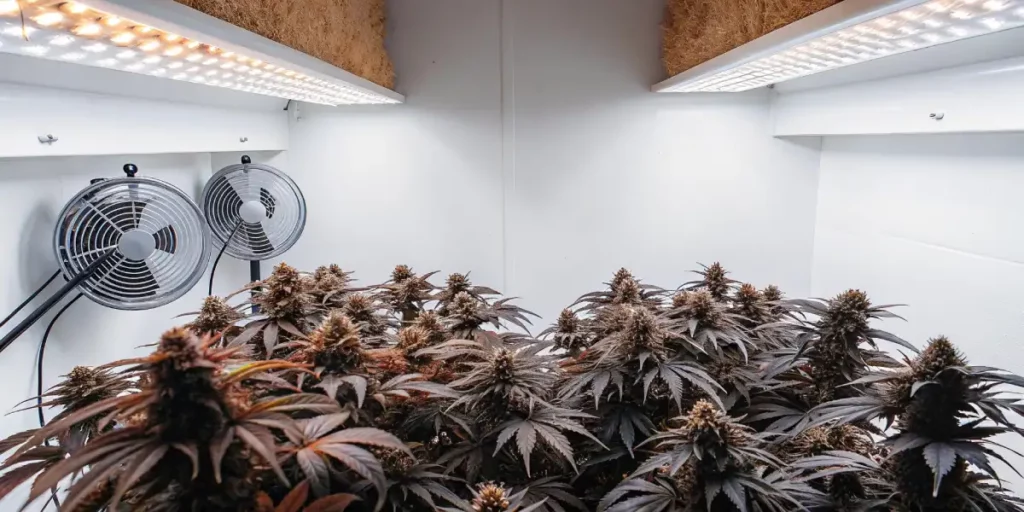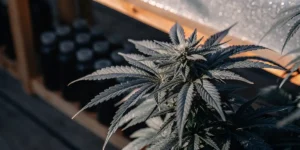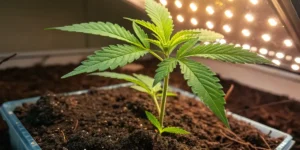Biscotti is a popular cannabis strain known for its distinctive flavor profile and potent effects. Growing this strain requires a combination of the right environment, careful attention to detail, and patience. In this guide, we will cover everything you need to know to successfully cultivate your own cannabis plants, from selecting seeds to harvesting mature buds. Whether you’re a seasoned grower or a beginner, following these steps will help ensure a bountiful and high-quality yield.
The first step is selecting high-quality seeds from a reputable source. It’s crucial to start with healthy seeds to ensure robust plants and optimize yield potential. Consider factors such as genetic stability, germination rates, and seed freshness when choosing your seeds. Once you have your seeds, germinate them using a reliable method, such as the paper towel technique or by planting them directly in a specialized starter medium. With careful monitoring, germination should occur within a week.
Once your seeds have germinated, it’s time to focus on creating the ideal environment for your plants. This variety thrives in a controlled indoor setting, where factors like temperature, humidity, light, and airflow can be precisely regulated. Aim to maintain temperatures between 68-77°F and keep humidity levels around 40-50% during the vegetative stage. Good airflow and ventilation are important to prevent mold and pests, so ensure your grow area has adequate air exchange.
Providing the right lighting is crucial during the different stages of growth. During the vegetative phase, these plants benefit from 18-24 hours of light per day. High-quality LED grow lights or HID setups work well. As the plants transition into the flowering stage, reduce the light cycle to 12 hours of light followed by 12 hours of darkness. This change mimics the natural sunlight patterns that trigger the flowering process, allowing your plants to develop rich, resinous buds.
The next important aspect is nutrition. Opt for a balanced, nutrient-rich soil or hydroponic nutrient solution to support healthy growth. During the vegetative phase, prioritize nitrogen for lush green development. As the plant transitions to flowering, decrease nitrogen and increase phosphorus and potassium to enhance bud formation. Pay attention to plant deficiencies and avoid over-fertilization, which can lead to nutrient burn.
Strain Overview: Traits, Effects & Genetics
The Biscotti Mintz is an intriguing hybrid recognized for its distinct qualities and compelling profile. Originating from a delicious blend of Southern California genetics, this strain has become a cherished favorite among cannabis enthusiasts. It is the result of a cross between Gelato #25 and South Florida OG, which gives it its appealing characteristics. The plant generally exhibits an indica-dominant structure, offering both aesthetic appeal and strong effects. Its flowers are compact and dense, often characterized by a tapestry of dark green and purple hues intertwined with vibrant orange pistils and a thick coating of trichomes. This captivating visual complexity is accompanied by an equally impressive aroma and taste, often compared to fresh-baked cookies with a spice kick.
The effects of this variety are where it truly shines, providing consumers with a powerful and uplifting experience. It is celebrated for its ability to deliver an intense cerebral high coupled with profound relaxation. Users often report a euphoric rush that promotes a sense of happiness and invigoration, making it an excellent choice for unwinding after a long day. Despite its indica dominance, it maintains a balanced effect, ensuring that mental clarity is complemented by soothing physical relief, without overwhelming sedation. These properties make it a fantastic option for those seeking to alleviate stress, anxiety, or chronic pain while still being able to function productively.
Genetically, this hybrid inherits a rich legacy from its parent strains, Gelato #25 and South Florida OG, both known for their strength and terpene-rich profiles. This genetic lineage is a key factor behind its robust plant structure and its ability to produce high-potency buds. Growers appreciate this strain for its resilience and quality yield, making it a rewarding plant to cultivate. It tends to thrive in controlled environments where temperatures can be meticulously maintained, although it is also adaptable to outdoor conditions. Overall, this strain combines a powerful genetic heritage with unique flavors and effects, solidifying its status as a must-try for aficionados in the world of cannabis.
Optimal Environment to Grow Biscotti Successfully
The Biscotti cannabis strain is renowned for its delectable flavor profile and potent effects, making it a popular choice among growers and consumers alike. To cultivate this strain successfully, creating an optimal environment is crucial. This starts with knowing the genetic background, which stems from a complex combination of Gelato #25, Girl Scout Cookies, and South Florida OG. Given its lineage, this variety benefits from a controlled environment that replicates its natural growth conditions as closely as possible.
Temperature plays a vital role in cultivation. This strain flourishes best in a warm, Mediterranean-like climate, with temperatures ranging from 70 to 80 degrees Fahrenheit (21 to 27 degrees Celsius) during the day. It’s important to avoid significant fluctuations, as this can stress the plants. During the flowering phase, maintaining a stable temperature enhances trichome production, which in turn improves the potency and aroma of the buds. At night, temperatures should be slightly cooler to mimic natural conditions and promote robust growth.
Lighting is another critical factor to consider. Adequate lighting, whether through natural sunlight or high-quality grow lights, is essential for photosynthesis and overall plant health. If growing indoors, full-spectrum LED lights are recommended as they offer the closest approximation to natural sunlight. Ensure that plants receive 18 hours of light during the vegetative stage and reduce to 12 hours during the flowering stage to mimic the natural transition from summer to fall, encouraging flowering.
Humidity levels also need to be carefully managed. During the vegetative phase, keep humidity levels between 40% and 60% to support vigorous growth. As the plants enter the flowering stage, gradually lower humidity to around 30% to 40% to prevent mold and mildew, which can compromise yield quality. Using a hygrometer can help you monitor and adjust these levels precisely, ensuring an environment conducive to healthy plant development.
Grow Room Setup for Biscotti Plants
Biscotti, an exquisite cannabis strain known for its potency and unique flavor profile, thrives best in a meticulously planned indoor grow room. The first step in setting up your grow room is to select a suitable space that can effectively accommodate your cannabis plants. Ensure the space has good ventilation capabilities as this strain requires a controlled environment for optimal growth. Adequate space between plants is essential to avoid overcrowding, which can lead to diseases and hinder growth. Additionally, a reflective material on the walls, such as Mylar, can help maximize light efficiency.
Lighting is a crucial component in the development of cannabis plants. Implementing a lighting system that mimics the natural sunlight cycle can significantly enhance both growth and yield. LED grow lights are recommended for their energy efficiency and adaptability in providing a full spectrum of light, which is essential during the growth stages. The lighting schedule should initially be set to 18-6 (18 hours on, 6 hours off) during the vegetative stage and adjusted to 12-12 during the flowering stage to mimic natural conditions and promote budding.
An optimal grow room should maintain a temperature range between 70-80°F during the day and slightly cooler at night. Humidity levels should be kept at around 50-60% during the vegetative stage and reduced to 40-50% during flowering to prevent mold and other humidity-related issues. Installing a reliable HVAC system or standalone air conditioning unit can aid in maintaining these parameters, ensuring a healthy environment for growth. Using hygrometers and thermometers can help you consistently monitor and adjust conditions as needed.
Proper airflow is another vital factor for successful cannabis cultivation. Oscillating fans can help circulate air evenly throughout the grow room, thereby strengthening the plant stalks and reducing the risk of pest infestations and mold. Position the fans in a way that provides a gentle breeze, ensuring that the air movement reaches all parts of the plant. Further, implementing a carbon filter can mitigate strong odors, making the grow room environment more pleasant and discreet.
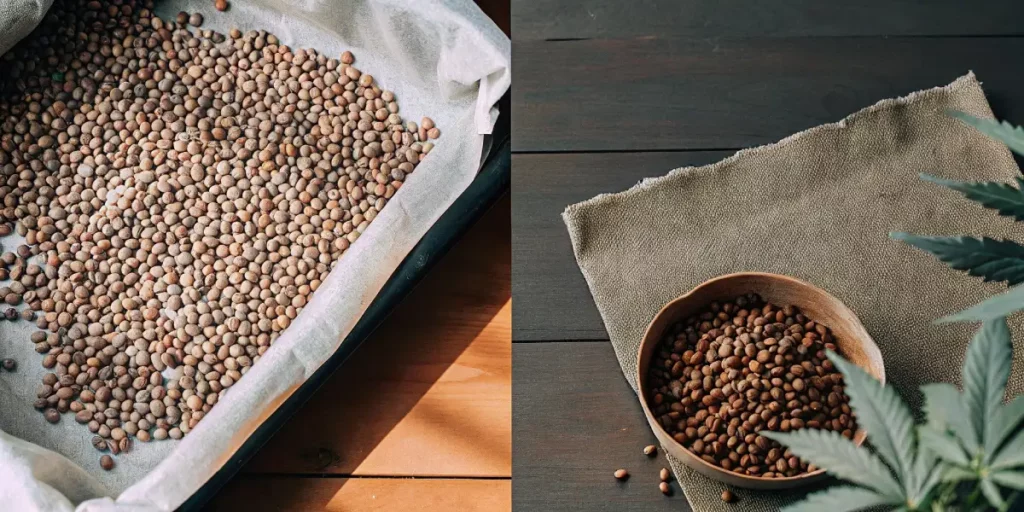
Indoor Growing Tips
This strain is a harmonious blend of Gelato #25 and South Florida OG, offering a sweet, earthy aroma with spicy undertones. When growing it indoors, the process starts by carefully selecting quality seeds from a reputable breeder. Consider starting with feminized seeds, which are easier for novice growers since they eliminate the need to identify and remove male plants. Ensuring optimal conditions indoors requires attention to detail and precise control over the growing environment.
Lighting plays a crucial role in the vigorous growth of this variety. Utilize full-spectrum LED lights to mimic natural sunlight and support both vegetative and flowering stages. Position the lights approximately 18 inches above the plant canopy to ensure adequate coverage and prevent light burn. As the plants grow, adjust the height to maintain the optimal distance. A lighting schedule of 18 hours of light and 6 hours of darkness during the vegetative stage is recommended before switching to a 12/12 cycle for flowering.
Temperature and humidity also significantly impact this strain’s growth stages. During the vegetative phase, maintain temperatures between 68-77°F (20-25°C) and humidity levels around 60%. Upon transitioning to the flowering stage, reduce humidity to 45-50% to prevent mold and mildew. Consistent airflow is pivotal; thus, incorporate fans for air circulation to reinforce stem strength and promote healthy energy distribution throughout the plant.
Feeding your plants with the right nutrients is essential for achieving high yields. A balanced nutrient mix rich in nitrogen, phosphorus, and potassium is ideal. During flowering, consider boosting phosphorus and potassium levels for robust bud development. pH levels should be monitored closely; aim for a pH range of 6.0-6.5 in the soil to ensure nutrient absorption and prevent nutrient lockout. Regularly assess and adjust your nutrient regimen based on the plant’s response to prevent deficiencies or toxicities.
Monitoring and maintenance are key to maximizing this cultivar’s potential indoors. Regularly inspect plants for signs of pests and diseases such as spider mites, powdery mildew, or nutrient imbalances. Employ natural pest control methods and maintain cleanliness in your grow space. Pruning and training techniques like topping or low-stress training (LST) can enhance light penetration and encourage even growth. This attention to each plant’s needs will help you cultivate robust and aromatic cannabis with impressive yields.
Outdoor Growing Tips
This potent and flavorful cannabis strain is well-loved by growers for its unique aroma and high THC content. Cultivating it outdoors can be a rewarding endeavor, provided you adhere to some essential growing practices. First, selecting the right location is crucial. This variety thrives in environments with ample sunlight. Ideally, you should secure a spot with at least six hours of direct sunlight daily. This enables the plants to photosynthesize effectively, leading to robust growth and bountiful yields.
Once you’ve chosen the perfect location, preparing the soil is your next vital step. These plants prefer well-drained soil rich in organic matter. Amend your outdoor garden plot with a blend of compost and peat moss to improve soil structure and fertility. This addition not only enhances water retention but also ensures that vital nutrients are available to facilitate growth. Regularly monitoring soil pH, aiming for a range of 6.0 to 6.5, can significantly contribute to the health and productivity of your crop.
Watering is another critical aspect of growing cannabis outdoors. While this strain is relatively drought-resistant, consistent irrigation practices will enhance plant vitality. It’s essential to avoid overwatering, which can lead to root rot and other plant diseases. A general rule of thumb is to water deeply but infrequently, allowing the top inch of soil to dry out between sessions. This encourages root development as the plants extend deeper into the soil in search of moisture.
Pest management is crucial when cultivating cannabis outside. Common threats such as aphids, spider mites, and caterpillars can damage your plants. Employ integrated pest management strategies, using beneficial insects such as ladybugs or neem oil sprays to naturally deter pests. Regularly inspecting your plants will help catch infestations early, reducing potential damage.
How to Germinate & Propagate Biscotti
Germinating and propagating Biscotti, a popular cannabis strain known for its sweet and earthy flavor profile, involves several key steps for successful cultivation. Proper germination is crucial as it marks the beginning of the plant’s growth cycle, and achieving optimal conditions can significantly impact the future vitality of the plant. Start by selecting high-quality seeds from a reputable supplier to ensure a healthy genetic lineage. Examine the seeds for any signs of damage or discoloration, as these might affect germination rates.
Once you have selected your seeds, the next step is to germinate them. One popular method is the paper towel method. Begin by moistening two clean paper towels and placing the seeds between them. Put the towels in a shallow dish and cover it to maintain humidity, ensuring no direct light reaches the seeds. Store the setup in a warm environment, ideally between 21–26°C (70–80°F), to foster optimal growth conditions. Check the seeds daily to keep the towels moist, being cautious not to over-saturate them since excess water can lead to mold growth or seed drowning.
Typically, the seeds will begin to sprout within 24 to 72 hours. You will observe a small, white root emerging from the seeds. At this point, carefully transfer the sprouted seeds into a growth medium, like soil or a hydroponic setup, ensuring the root points downward. Plant the seeds approximately 0.5 inches deep, covering them lightly with the chosen medium. Be sure to maintain consistent moisture and light levels to support their initial growth phase. Consider propagating the seedlings by cloning—a technique where cuttings from a healthy mother plant are rooted—once they mature and develop a robust structure. Cloning can help replicate the desired genetic traits, ensuring a consistent yield and quality.
Propagation can further be enhanced by providing an ideal environment where temperature, humidity, and light cycles are optimally managed. Using propagation chambers with controlled conditions can increase success rates. These chambers help maintain the right humidity and temperature to encourage root development in clones. Regularly monitor environmental conditions and nutrient delivery to correct any issues early. This detailed attention to conditions during propagation helps in achieving healthy plants, allowing growers to sustain their growth and maximize yields.
Vegetative Stage: Nurturing Your Biscotti Plants
The vegetative stage is a critical phase in the growth of Biscotti cannabis plants, characterized by rapid development of foliage and root systems. During this period, your primary focus should be on providing optimal conditions to maximize vegetative growth. As this balanced indica-sativa hybrid typically requires around 4 to 8 weeks in this stage, depending on your specific growing goals and environmental conditions. Begin by ensuring that your plants have access to ample light, as this will directly impact photosynthesis and overall plant health. A light schedule of 18-6 (18 hours of light and 6 hours of darkness) is commonly recommended for this stage.
Besides to adequate lighting, proper nutrients play an essential role in nurturing plants during the vegetative phase. Since this stage emphasizes leaf and stem development, focus on fertilizers high in nitrogen. A balanced nutrient mix that includes phosphorus and potassium is also recommended to support robust root growth and plant vigor. Regularly check for signs of nutrient deficiencies or excesses, such as yellowing or browning of leaves, and adjust your feeding regimen accordingly. Additionally, maintain a pH level of 6.0 to 6.5 in the soil to ensure optimal nutrient absorption by the plant.
Temperature and humidity control are vital components of a successful vegetative environment. Aim for daytime temperatures between 70°F and 85°F (21°C and 29°C), with a slight decrease at night. Relative humidity should be maintained between 40% and 70% during this stage. Employ ventilation systems to ensure proper air circulation, which helps reduce the risk of mold and pest infestations. Regular pruning and training techniques, such as topping and low-stress training (LST), can be used to shape your plants, encouraging bushier growth and increased yields. By meticulously managing these factors, you will establish a strong foundation for your plants as they transition into the flowering stage.
Flowering: What to Expect
When entering the flowering stage, the Biscotti strain begins to showcase its distinctive traits, marked by a transformation that highlights its robust and visually appealing buds. Flowering typically occurs over a period of 8 to 9 weeks, during which the plants experience a significant increase in size and density. Gardeners can anticipate a growth surge as the plants stretch and develop a complex structure of thick, resinous buds. This strain is known for its striking visual appeal, with a vibrant palette of green, purple, and orange, creating an aesthetically pleasing garden environment.
A staple of this strain during flowering is the substantial resin production, which results in a glistening appearance that speaks to its high potency. As the plant matures, tiny trichomes blanket the buds, a signal of not only imminent harvest but also remarkable quality. The resin is profoundly fragrant, emitting a sweet, floral aroma that hints at the rich, decadent flavors of the final product. For cultivators focusing on resin extraction, this variety offers a rewarding experience, given its generosity in trichome-rich production.
These plants require careful attention to humidity levels during the flowering stage to prevent mold and mildew—a common concern with dense, resin-coated buds. Ideal humidity levels should be maintained around 40-50% to ensure a healthy cycle without compromising yield quality. Additionally, growers should be vigilant regarding nutrient supply, as this strain tends to demand increased phosphorus and potassium during flowering to support vigorous bud development. Providing an optimal environment with adequate light intensity and ventilation is crucial to maximize yield and maintain plant health.
As the flowering stage progresses, growers should pay close attention to the maturity of trichomes using a magnifying glass or jeweler’s loupe. This inspection helps in determining the ideal harvest time to achieve the desired potency and flavor profile. While this strain typically offers a balanced and rich cannabinoid profile, harvesting at the right time can enhance the natural sweetness and potency. Overall, cultivating this variety offers an enriching growing experience, combining visually stunning flowers with potent, aromatic results that make the effort well worth the gardener’s attention.

Fertilizers & Nutrient Schedule
Biscotti, a popular indica-dominant hybrid strain, is celebrated for its potent effects and distinct flavor profile. For growers, achieving healthy cannabis plants with bountiful yields involves mastering the art of feeding, with a particular focus on fertilizers and nutrient schedules. The aim is to ensure the strain receives a balanced diet, crucial for robust growth and optimal resin production. Knowing the essential nutrients and their role in different growth stages helps in tailoring the feeding strategies to meet the plant’s specific needs.
During the vegetative stage, this variety requires a higher concentration of nitrogen to support the rapid growth of leaves and stems. A well-formulated vegetative nutrient mix should contain a higher N-P-K (Nitrogen-Phosphorus-Potassium) ratio, such as 3-1-2. Additionally, incorporating micronutrients like calcium, magnesium, and iron will optimize the plant’s metabolic processes. Feeding should be done carefully to avoid over-fertilization, which can result in nutrient burn. Target watering with nutrients every alternate feeding, maintaining consistent moisture without waterlogging the roots.
As the plant transitions to the flowering stage, the nutrient requirements shift dramatically. The emphasis moves towards phosphorus and potassium to facilitate impressive bud formation. Adjust the nutrient mix to a 1-3-3 ratio or similar to foster dense and resinous flowers. Carefully monitor pH levels, aiming to keep it between 6.0 and 6.5 for soil grows, and 5.5 to 6.0 for hydroponic setups. Introducing supplements like molasses or bloom boosters can further enhance flavor and potency, rewarding growers with a premium harvest.
Timing and consistency in the nutrient schedule are key to achieving desired results. It’s crucial to gradually adjust nutrient concentrations in response to the plant’s development, observing for any signs of deficiencies or imbalances. By adhering to a meticulously planned feeding schedule that accounts for the strain’s unique characteristics and nutritional demands, growers can expect lush, aromatic yields that highlight the plant’s true potential. Regular monitoring and adjustments based on environmental conditions will ensure that each growing cycle is productive and rewarding.
Pest and Disease Prevention for Healthy Cannabis Plants
Ensuring that your biscotti cannabis plants remain healthy involves diligent pest and disease prevention strategies. Pests such as spider mites, aphids, and fungus gnats can wreak havoc on your crop if not managed properly. A proactive approach using preventive measures is essential to minimize pest infestations and potential diseases. Regular monitoring and maintaining optimal growing conditions are the foundation of a robust pest and disease prevention plan.
First, establish a routine inspection schedule to identify early signs of pest presence or disease symptoms. This could include checking the undersides of leaves for mite activity, looking for sticky residue which might indicate aphids, or watching for changes in leaf color and texture. Early detection allows for immediate intervention and can prevent widespread infestation. Using a magnifying glass during inspections can help spot tiny pests that are not visible to the naked eye.
Cultural practices play a significant role in preventing disease. Ensure your growing environment maintains the appropriate temperature and humidity levels as fluctuations can stress plants, making them more susceptible to diseases like powdery mildew and bud rot. Good air circulation is crucial; consider installing fans in enclosed growing spaces to provide fresh air and reduce stagnant conditions where mold thrives.
Introduction of beneficial insects is an effective biological control method. Ladybugs and predatory mites are natural predators of many common cannabis pests. Additionally, organic pest control solutions, such as neem oil or insecticidal soaps, can be applied to manage pest populations. However, it is crucial to follow application guidelines carefully to avoid damaging your plants.
Lastly, practicing good hygiene in your grow space can prevent the introduction and spread of disease. Wash hands thoroughly before handling plants and sterilize tools between uses. Keeping a clean grow area and avoiding bringing in contaminated materials can greatly decrease the chances of attracting pests and experiencing disease outbreaks, ensuring your biscotti cannabis plants stay vigorous and productive.
Harvesting & Drying Biscotti the Right Way
Harvesting Biscotti cannabis at the optimal time is crucial to maximize potency, flavor, and yield. This hybrid strain, renowned for its sweet, cookie-like aroma and relaxing effects, typically reaches maturity around 8-10 weeks into its flowering phase. To determine the best time to harvest, closely examine the trichomes on the buds using a magnifying glass or microscope. When most trichomes transition from clear to milky white, with a hint of amber, it’s the perfect time to proceed with harvesting. Always harvest during the day’s cooler and drier hours, as moisture and heat can compromise the quality of the buds.
Begin the harvesting process by using sharp, clean shears to cut the branches from the main stem. It’s essential to handle the plant gently to preserve the trichomes, which contain the terpenes and cannabinoids that contribute to this strain’s unique effects and flavors. Once you have separated the branches, trim away the fan leaves and larger sugar leaves. This opens up the buds for more effective drying and prevents mold, which can develop if too much moisture is trapped inside the drying bud structure. Keep in mind that patience is key during this step, as a rushed trimming process can cause damage to the delicate trichomes.
Drying your cannabis correctly is fundamental to enhancing its flavor and potency further. Construct a dimly lit, well-ventilated environment with a consistent temperature of 60-70°F (15-21°C) and humidity levels between 50-60%. These conditions help preserve the terpenes and cannabinoids, ensuring a smooth smoke and robust flavor profile. Hang the trimmed branches upside down or place them on drying racks, ensuring air circulates freely between each bud. The drying process usually takes about 7–14 days, after which the stems should snap rather than bend, signaling that the buds are ready for curing. Proper drying is a cornerstone of high-quality cannabis, setting the foundation for an exceptional curing process.
After drying, curing is the next step, and it should not be ignored as it significantly impacts the final product’s quality. Place the dried buds in airtight glass jars, filling them to about 75% capacity to allow room for air circulation. Store the jars in a cool, dark place, opening them daily for the first few weeks to release moisture and replenish with fresh air—a process known as “burping.” Gradually reduce the frequency of burping over several weeks. This careful method not only enhances the strain’s aroma and taste but also improves its shelf life by preventing mold and degradation.
Biscotti Strain Type: Indica, Sativa or Hybrid?
This popular and sought-after hybrid strain is well-known in the cannabis community for its unique combination of effects and flavors, resulting from a distinctive genetic lineage. As a hybrid, it is crafted from a well-balanced mix of indica and sativa strains. This crossbreeding aims to inherit the most favorable characteristics from both types, offering users a harmonious blend of effects that can cater to various preferences and needs. Typically, it is derived from a combination of Gelato #25, Girl Scout Cookies, and South Florida OG strains, each contributing to its hybrid nature.
This strain leans slightly towards the indica-dominant side, with a typical ratio of around 80% indica and 20% sativa. This dominance is evident in its effects, which tend to be more relaxing and calming. The indica traits are known for promoting a sense of deep relaxation, making it an excellent choice for evening or nighttime use when unwinding after a long day is desired. Users often report feeling a full-body high that eases tension and stress, allowing for a more serene and peaceful state of mind.
Despite its strong indica influence, the strain also retains some of the energizing aspects of its sativa lineage. This slight sativa presence provides a gentle cerebral uplift that can help enhance mood and creativity, making it a versatile option for those who enjoy a balanced high. The combined effects of the indica and sativa genetics make it a favorite for recreational and medicinal users alike. It can be particularly beneficial for alleviating conditions such as chronic pain, anxiety, and insomnia or providing a creative boost during artistic endeavors.
Why Grow Biscotti? Key Benefits for Cultivators
Biscotti is an increasingly popular strain among cannabis cultivators due to its notable genetic lineage and impressive characteristics. Originating from a blend of Gelato #25 and South Florida OG, this indica-dominant strain carries the delightful essence and potency that many growers seek. It is cherished for its high THC content, often ranging between 22% and 25%, which appeals to both recreational and medicinal users. Cultivators are inclined to grow this variety because its unique attributes and robust demand create promising opportunities in the cannabis market.
One of the primary benefits for cultivators is its relatively manageable growth requirements, making it accessible to both novice and experienced growers. This strain flourishes in controlled indoor settings where factors like temperature, humidity, and lighting can be consistently monitored and adjusted. Plants typically grow to medium height and produce dense, visually appealing buds covered in trichomes, which signifies high potency. Such attributes allow growers to optimize space and resources, leading to a bountiful and cost-effective yield.
Furthermore, its strong aroma and flavor profile—characterized by a rich blend of sweet, earthy, and nutty undertones—set it apart from other strains. This distinct sensory experience increases its marketability, as consumers often seek flavorful and aromatic cannabis. Additionally, this strain is noted for its potential medicinal benefits, including stress and pain relief, and is effective in enhancing mood and relaxation. These therapeutic properties make it a sought-after choice among medical users, further driving demand and profitability for cultivators who choose to grow it.
Potential Challenges When Growing Biscotti
Growing the Biscotti cannabis strain, renowned for its delectable aroma and potent effects, can present several challenges that cultivators must navigate for a successful harvest. One primary challenge is its susceptibility to environmental stress, particularly fluctuations in temperature and humidity. This strain thrives in a controlled environment where temperature remains between 70 to 80°F (21 to 27°C) during the day and slightly cooler at night. Any significant deviation from these parameters can induce stress, potentially leading to stunted growth or reduced yields.
Another critical challenge when cultivating this variety is its sensitivity to nutrient imbalances. It requires a carefully balanced regimen of nutrients to flourish. Over-fertilization can lead to nutrient burn, while deficiencies may manifest as discolored leaves or slowed growth. Growers must regularly monitor the pH levels of the growing medium, aiming to maintain a range of 6.0 to 6.8 in soil or 5.5 to 6.5 in hydroponic systems. Regular soil testing and a meticulous feeding schedule become invaluable in preventing these issues.
Pest and disease management is another significant hurdle when growing this strain, as it can be vulnerable to common cannabis pests like spider mites, aphids, and powdery mildew. Implementing integrated pest management strategies, including preventative measures such as introducing beneficial insects or utilizing organic insecticides, can be crucial. Furthermore, ensuring adequate air circulation and maintaining cleanliness in the growing area can help prevent such infestations. Growers should routinely inspect plants for early signs of pest activity, which allows for timely intervention before infestations become too severe.
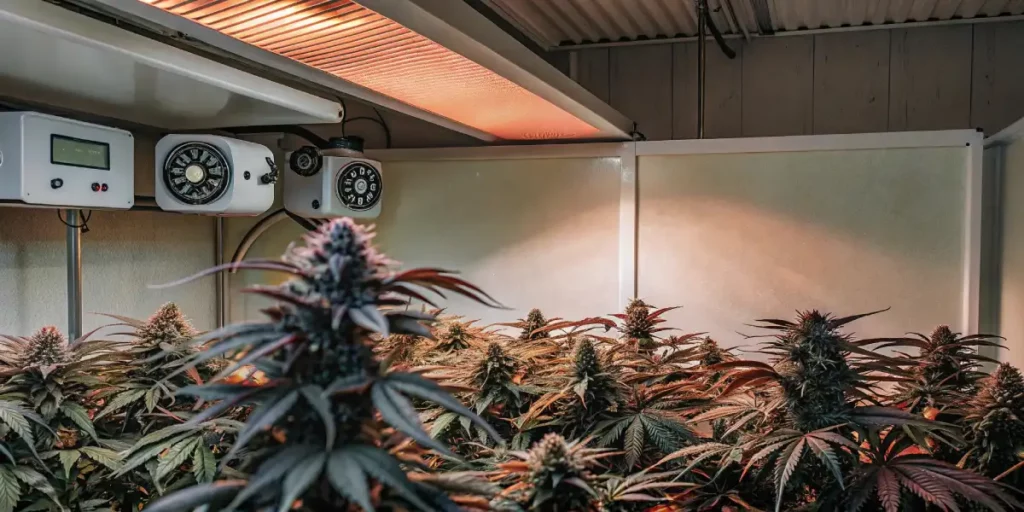
Is Biscotti Worth Buying? Here’s What You Need to Know
Biscotti is a popular cannabis strain known for its unique flavor profile and potent effects. Originating from a cross between Gelato #25 and South Florida OG, this hybrid has gained a loyal following among both recreational users and medical patients. This strain is celebrated for its sweet and spicy aroma, often reminiscent of freshly baked cookies, with hints of herbs and fruit. For those seeking a balanced yet powerful high, it offers an enticing option. Its well-rounded effects often bring about a seamless blend of relaxing body sensations with a cerebral uplift, making it a versatile choice for various occasions.
When considering whether this variety is worth buying, it’s essential to take into account the quality of its effects. Consumer reviews often highlight its ability to ease stress and tension, making it a popular option for unwinding after a long day. Additionally, its potent THC content, usually ranging between 20-25%, makes it a strong choice even for experienced consumers. However, due to its strength, this strain may not be the best for beginners or those with a low tolerance to THC. It’s advisable to start with a small dose and gradually increase as your comfort level allows.
In terms of cultivation, this hybrid can be a rewarding strain for growers willing to put in the effort. It is typically grown indoors, where environmental conditions can be more precisely controlled. This plant benefits from pruning and training techniques to maximize its yield, which can be moderately high when properly maintained. Growers also appreciate its resistance to common molds and pests, although careful attention should still be paid to humidity and temperature levels. With an average flowering time of 8 to 9 weeks, this strain rewards patient cultivators with dense, trichome-laden buds that embody its potent characteristics.
FAQs
How hard is it to grow Biscotti cannabis strain?
When learning how to grow Biscotti, most growers find it moderately challenging. The strain prefers stable indoor environments where temperature and humidity can be precisely managed. While it’s resistant to many common molds and pests, it can be sensitive to nutrient imbalances. With patience, consistency, and proper monitoring, even intermediate growers can achieve excellent yields.
What is the ideal temperature and humidity for growing Biscotti?
Anyone researching how to grow Biscotti should aim for 70–80°F (21–27°C) during the day and slightly cooler nights. During the vegetative stage, maintain 50–60% humidity, then lower it to 40–45% during flowering to prevent mold. Consistent airflow and ventilation are essential to help strengthen stems and preserve resin quality.
How long does Biscotti take to flower and reach harvest?
When following how to grow Biscotti best practices, this strain typically flowers within 8–9 weeks. Indoor growers can expect to harvest around week 10, while outdoor cultivators usually collect their buds in early October. Timing is key — harvest when most trichomes are milky with a few amber tones to capture Biscotti’s peak potency and flavor.
What nutrients work best for Biscotti plants?
To master how to grow Biscotti, provide nitrogen-rich nutrients during the vegetative phase to fuel growth, then switch to a phosphorus and potassium-heavy formula for flowering. Maintaining a pH between 6.0 and 6.5 in soil is crucial for proper nutrient absorption. Adding organic supplements like molasses can further enhance sweetness and terpene richness.
How can I increase yield when growing Biscotti indoors?
If you want to maximize results while applying how to grow Biscotti techniques, focus on training methods like topping, pruning, or low-stress training (LST) to improve light penetration and airflow. Consistent lighting (18 hours during veg, 12 during flower), correct nutrient feeding, and controlled humidity will result in dense, trichome-rich buds with that signature Biscotti aroma.

